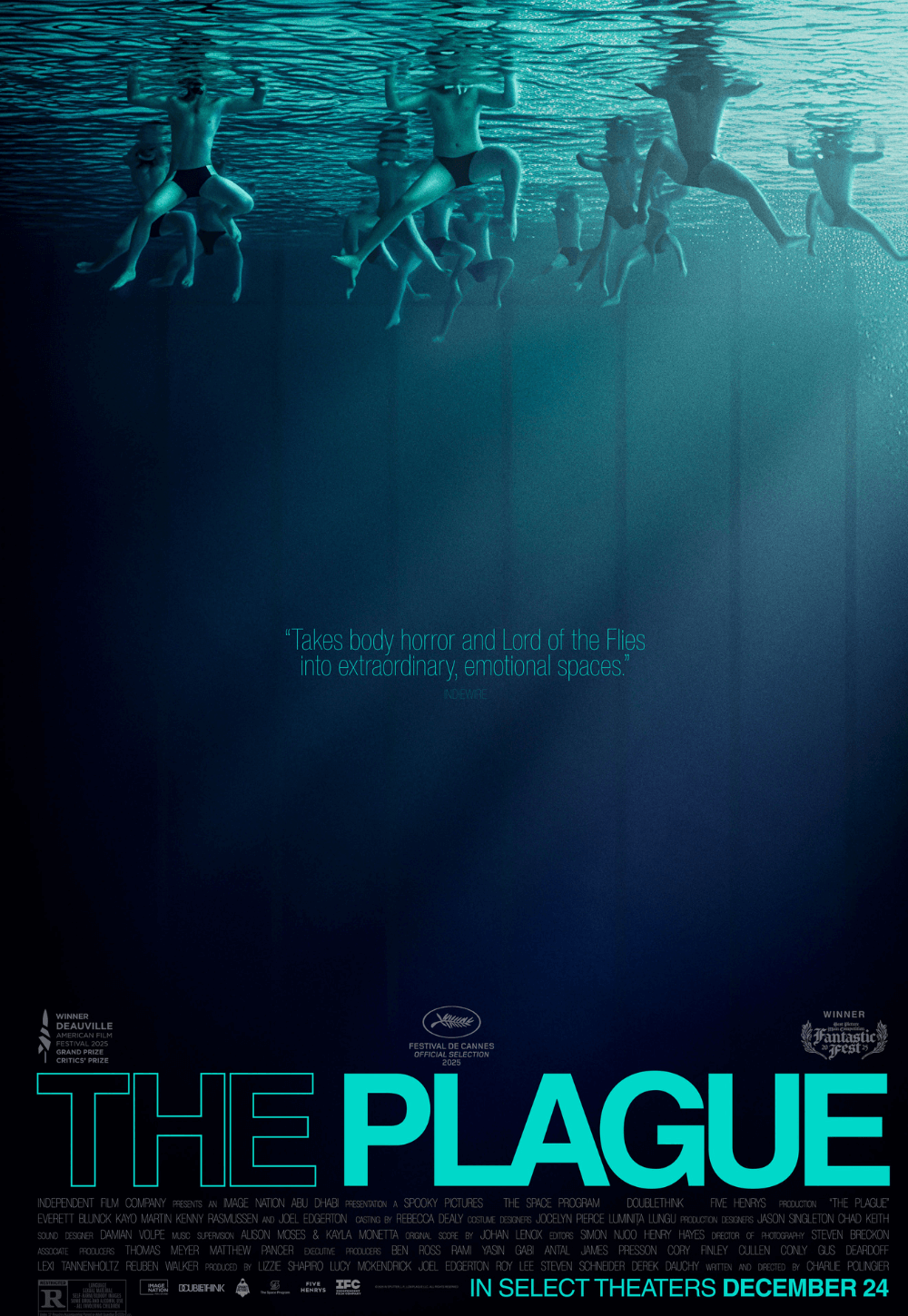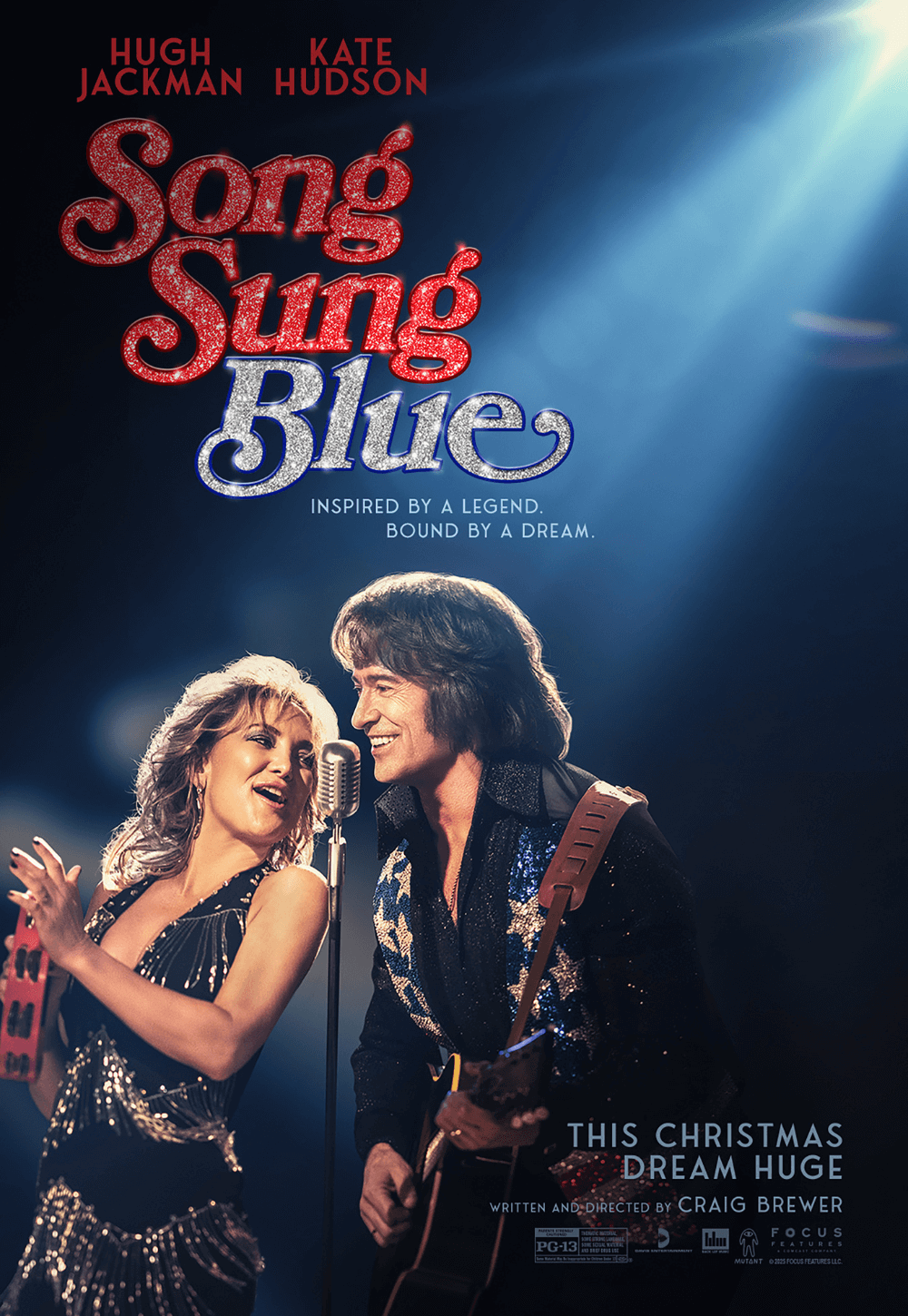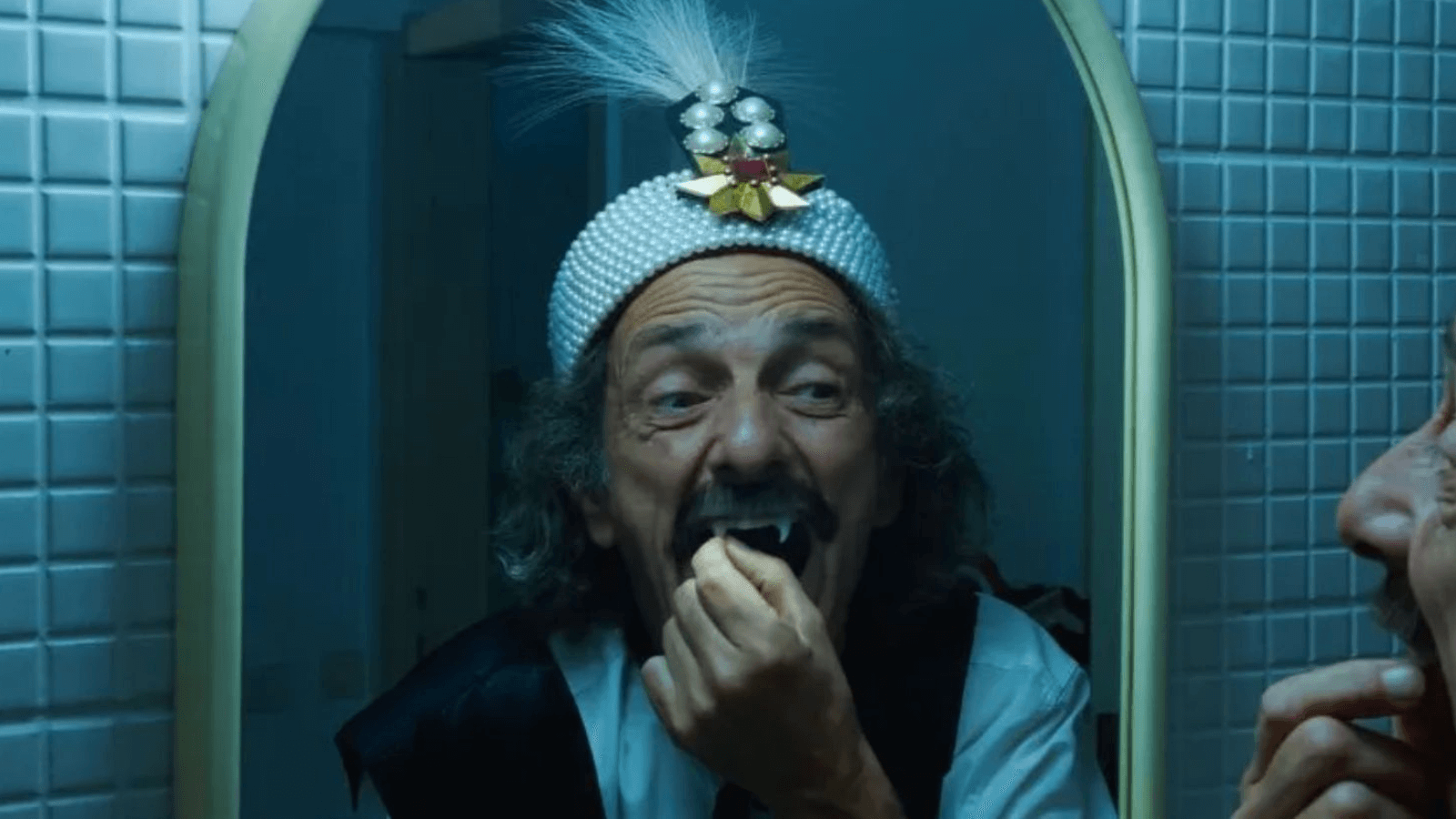
Dracula – Locarno Film Festival Premiere
By David Hill | August 16, 2025
(Note: Radu Jude’s Dracula premiered at the 78th Locarno Film Festival this month. This is an early look from DFR’s Swiss correspondent, David Hill.)
By simply calling his latest film Dracula, Radu Jude has abandoned the long titles of his previous work. Despite this, anyone familiar with the Romanian auteur’s films will not be surprised to learn that he does not deliver a straightforward retelling of the famous Dracula mythology and literature. On the contrary, even by the standards of his previous work, Dracula is an unconventional and challenging film, and it could not be further removed from Robert Eggers’ recent Nosferatu (2024). Interestingly, Jude’s latest film is as much about AI as it is about the mythical figure of its title, but perhaps the two are not as far apart as one would initially assume. After all, AI can also be viewed as an undead entity that gains its power from sucking humanity’s lifeblood.
Jude’s early work was rooted in the realist style of the Romanian New Wave. He successfully and movingly explored domestic issues in films such as his 2006 short Lampa cu căciulă, and his 2012 feature Everybody in Our Family. After this period, Jude increasingly integrated essayistic and darkly satirical elements into his work, a shift already visible in Aferim! (2015) and later brought to the forefront in I Do Not Care If We Go Down in History as Barbarians (2018) and Bad Luck Banging or Loony Porn (2021). In doing so, Jude has developed a singular style that blends collage, historical reflection, and sharp humor. He reached a high point with his acclaimed 2024 film Do Not Expect Too Much from the End of the World, which masterfully combined intentionally abrasive humor, political anger, and a playful mix of media forms. Overflowing with commentary on countless themes ranging from TikTok videos to the dangers of driving in Romania, any given five minutes of the film offered more food for thought than most features in their entirety.
Stylistically, Dracula follows in the footsteps of Do Not Expect Too Much from the End of the World, but Jude somehow manages to throw even more at the viewer with his latest film. Because of this, and its patience-testing length of 170 minutes, Dracula is a lot to process. It bursts at the seams with ideas and references, which are conveyed in a confrontative manner without regard for good taste. This approach is bound to be rejected by many, as witnessed by numerous walkouts during the film’s recent world premiere at the 78th Locarno Film Festival. Given Dracula’s unconventional and collage-like structure, the film can be disorienting and difficult to digest. It has a framing device with a young film director (played by newcomer Adonis Tanța, who also appears in Jude’s other 2025 film, Kontinental ’25, but has no other acting credits yet) talking straight into the camera. He tells the audience that he has been commissioned to make a super-commercial Dracula film full of violence, sex, and emotions, but is not satisfied with his results. Therefore, he decides to resort to generative AI in the hope that it will create a better film than his.
Often returning to the young director addressing the audience or conversing with various hilariously named AI (such as Dr. AI Judex 0.0), Dracula jumps between a depiction of the in-film director’s concept and various chapters that he prompts AI to render. The former follows the actors of a seedy Dracula-themed cabaret act in Romania, which offers its wealthy patrons, among them several tourists from the West, the possibility of engaging in sexual acts with the in-character actors and a staged vampire hunt. Fed up with the constant exploitation and humiliation, the actors playing Dracula (an older and impotent man who used to be in a mental institution for believing himself to be the real Dracula, played by veteran actor Gabriel Spahiu) and his female victim (a weary but empathetic goth and OnlyFans model played by newcomer Oana Maria Zaharia) try to escape during one of their shows. With the ruthless head of the cabaret act refusing to let them get away, and the patrons unwilling to leave without the vampire hunt they were promised, a real hunt ensues and quickly spirals out of control.
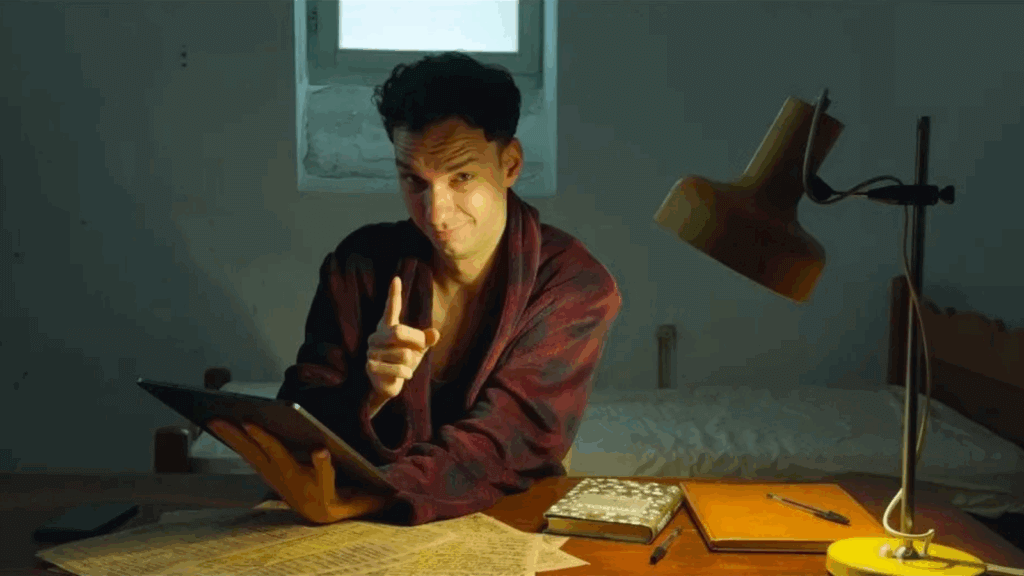
Unlike the film-within-the-film scenes surrounding the cabaret act, the ten-plus chapters the in-film director prompts AI to render have no connective narrative tissue. Rather, they adhere to Jude’s essayistic and collage-like style, which stitches together disparate images, media, and tones to create meaning through juxtaposition. Unfortunately, not all of these chapters feel as essential to the whole as the various chapters of Do Not Expect Too Much from the End of the World did, and they significantly vary in quality. Some chapters offer the kind of sharp humor and insightful commentary Jude is known for, such as a chapter depicting a capitalist Dracula acquiring a gaming company, exploiting its workers, and then hunting them down with the aid of zombies once they start to rebel against his methods. There is also a funny “abuse” of F. W. Murnau’s silent film classic Nosferatu (1922), where footage of the film is used for ridiculous modern-day ads. Another satisfying chapter is “inspired by Dreyer” and depicts a poor Dracula having a tooth ache and visiting a dentist called Dr. Caligari, who throws him out because he cannot afford the required treatment.
Other chapters range from bland and patience-testing to unfunny, pointless, and annoying. The former category includes a 1960s socialist romance, and a 50-minute adaptation of Vampirul, the first Romanian vampire novel from 1938. Among the film’s least successful chapters are a montage of outrageous pornographic images supposedly inspired by Bram Stoker’s Dracula (1992) by Francis Ford Coppola, and a “folk tale” supposedly inspired by 19th-century Romanian writer Ion Creangă, which follows a poor peasant whose crops unexpectedly yield huge penises instead of corn. It is unclear whether Jude wrote these chapters, which were created by AI in the universe of the film, with the help of AI or not. What is clear, however, is that they include a significant amount of imagery rendered by generative AI, even though they mostly contain traditional footage shot with an actual camera and real-world actors. This raises ethical questions about the use of AI in filmmaking and has already proven controversial at the film’s world premiere.
As someone who is critical of the use of AI in filmmaking, it would be tempting to read Jude’s use of AI-generated imagery as ironic, and to view Dracula as a critique of AI. Indeed, despite what the in-film director says, the story he came up with about the actors of a cabaret act is generally more engaging than the film’s other parts. When this story is put on hold to make room for another AI chapter, Dracula frustratingly loses momentum. Moreover, most of the AI-generated imagery on display looks ugly, with common flaws of the technology like unstable proportions, jittery motion, and backgrounds that appear to liquefy. This tends to pull the viewer out of the film, especially when engaging, traditionally shot moments are intercut with hideous and laughable AI imagery. A prime example includes the above-mentioned sequence where a capitalist Dracula hunts down workers with the aid of zombies, as seen in a short clip that has been released online. Finally, several of the AI chapters show an underlying sexist, racist, and classist attitude, which reflects the frequently raised critique of AI reproducing and perpetuating harmful biases that exist in society.
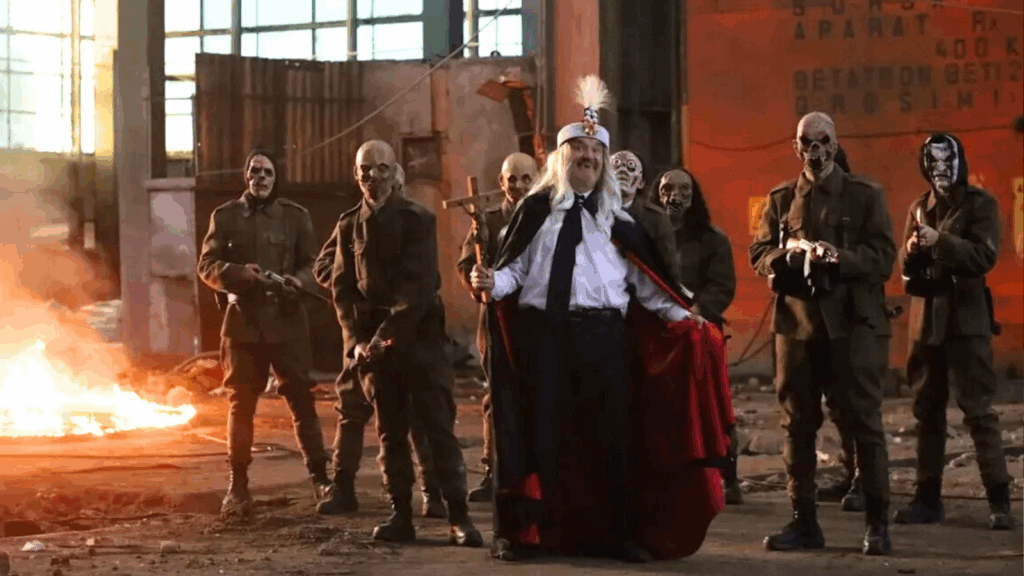
However, with Dracula being a film by Jude, things are not so straightforward. Instead of delivering a cohesive statement on AI, his film raises questions about it without providing easy answers. In the Q&A following Dracula’s world premiere at Locarno, Jude did not deliver a clear stance on the use of AI in filmmaking. Rather, he said that he feels AI brings something to cinema and that he wants to engage with all the tools available to him. Simultaneously, he stressed that “a small Romanian film” like Dracula, which has a reported budget of 1.5 million euros, is not comparable to a big Hollywood production when it comes to the use of AI. Be that as it may, Jude ultimately leaves it to the viewer to wrestle with how AI is employed both in Dracula’s imagery and as a story tool. Regardless of what conclusions one draws (and this reviewer cannot deny that the AI-generated imagery in the film left a bad aftertaste), Jude should at least be respected for the audacity and fearlessness of tackling this timely and controversial subject head-on.
While AI is the aspect of Dracula that will cause the most debate, the film also tackles several other themes. In particular, it playfully deconstructs the myth of Dracula and delivers a critique of how it has been exploited both by Western culture and the far-right in Romania. The latter have repeatedly used Vlad the Impaler, the real 15th-century ruler of Wallachia who was the inspiration for and has often been blurred together with the mythical figure of Dracula, as a political symbol. Filmed in Transylvania and rooted in a Romanian cultural context, Dracula can be seen as an effort to reclaim the Dracula myth and reshape it through a local and decidedly non-fascist lens. However, like the film’s treatment of AI, its commentary on the myth of Dracula ultimately feels more like a string of free-flowing ideas rather than a cohesive statement. Additionally, Dracula explores themes that are familiar from Jude’s previous work, such as consumerism, capitalist exploitation, the degradation of culture, and the past’s influence on the present.
Shot on iPhone by Jude’s regular cinematographer Marius Panduru, the visuals of Dracula have a grungy feel to them. They do not offer much to savor, but they fit the film’s playful tone. The film’s mise-en-scène varies significantly between chapters, with cardboard cutouts sometimes being used instead of extras, and a few sparse sets recalling the look of Lars von Trier’s Dogville (2003) and Manderlay (2005). The film’s provocative nature and constant digressions are likewise reminiscent of von Trier, especially his later work—Nymphomaniac: Vol. I (2014), Nymphomaniac: Vol. II (2014), and The House That Jack Built (2018)—but this is where the parallels to the Danish director end. Dracula is very much a film by Jude, both regarding its form and its content, and nobody will mistake it for a new film by von Trier or any other director.
The cast of Dracula is comprised of both newcomers, such as the above-mentioned Tanța and Zaharia, as well as familiar faces from Jude’s previous work, such as Ilinca Manolache, Serban Pavlu, and the above-mentioned Spahiu. Most actors appear in several of the film’s chapters and play different roles. Take Tanța, who, in addition to playing the director in the film’s framing device, also appears as an emcee in the cabaret act, the main character in the adaptation of Vampirul, a rather annoying fascist robot who looks a lot like C-3PO from Star Wars (1977) in the capitalist Dracula chapter, and the peasant whose crop yields penises. While the film’s cast is solid, Tanța occasionally fails to sell the film’s abrasive humor, resulting in some of his characters’ comic moments feeling forced and not reaching their full potential.
Ultimately, Dracula is a mixed bag. While some sequences are brilliant and contain Jude’s signature blend of sharp humor and interesting commentary, other sequences disappoint. After a strong start, the film noticeably loses momentum in its middle stretch, before once again picking up towards the end. As a whole, Dracula feels disjointed and uneven, and it would have benefited from a tighter structure. Still, even in its current form, the film contains too many interesting ideas and stylistic flourishes to be entirely dismissed. Although Dracula falls short of the standard set by Jude’s previous work, viewers willing to accept its use of AI imagery and crass humor should still find enough to make watching the film feel worthwhile despite its flaws.

David Hill is a lawyer from Switzerland. He has long had a passion for cinema, and he devotes most of his spare time to watching and researching films. His primary interest focuses on arthouse films, and he occasionally contributes to Deep Focus Review as a guest writer.
Thank You for Supporting Independent Film Criticism
If the work on DFR has added something meaningful to your love of movies, please consider supporting it.
Here are a few ways to show your support: make a one-time donation, join DFR’s Patreon for access to exclusive writing, or show your support in other ways.
Your contribution helps keep this site running independently. However you choose to support the site, please know that it’s appreciated.
Thank you for reading, and for making this work possible.
Brian Eggert | Critic, Founder
Deep Focus Review


